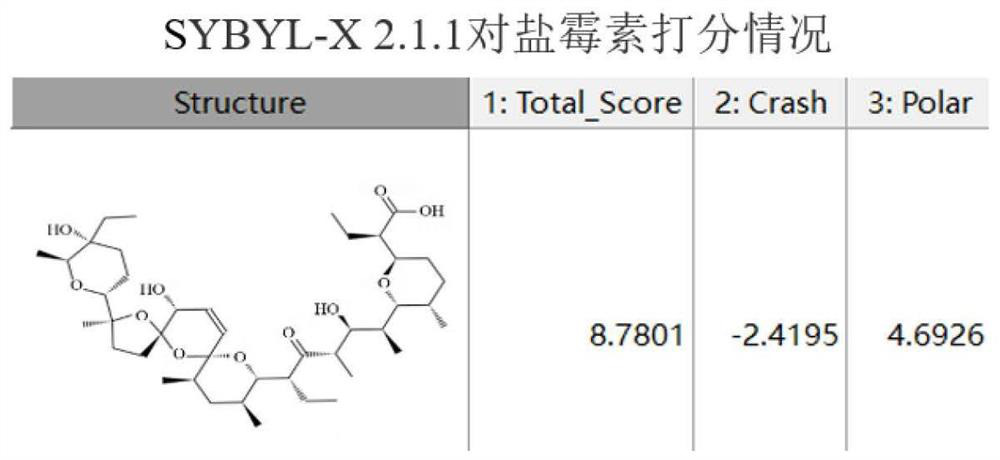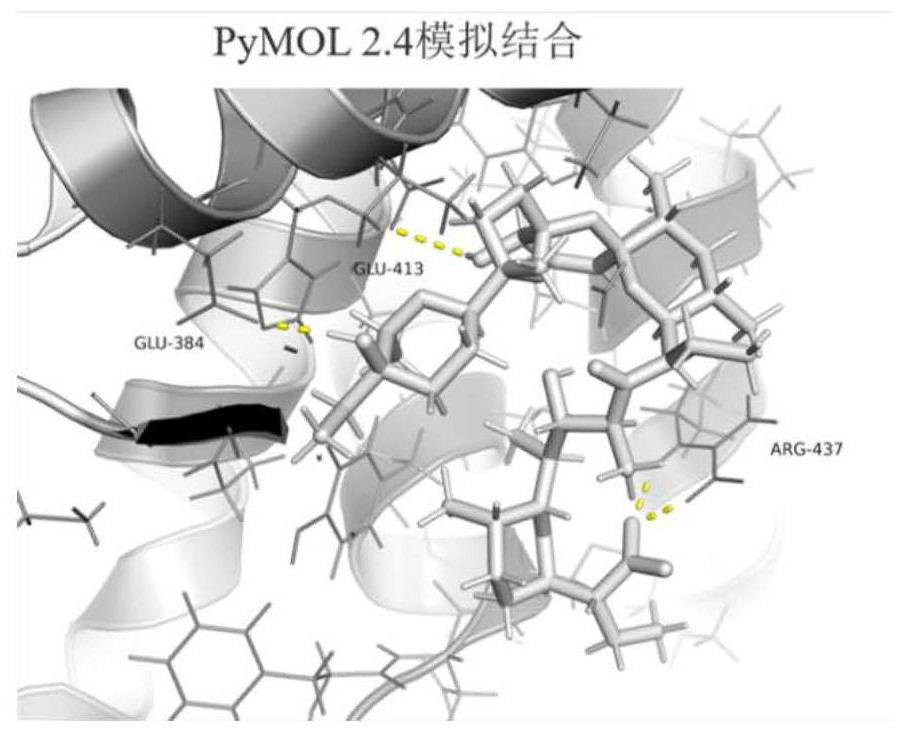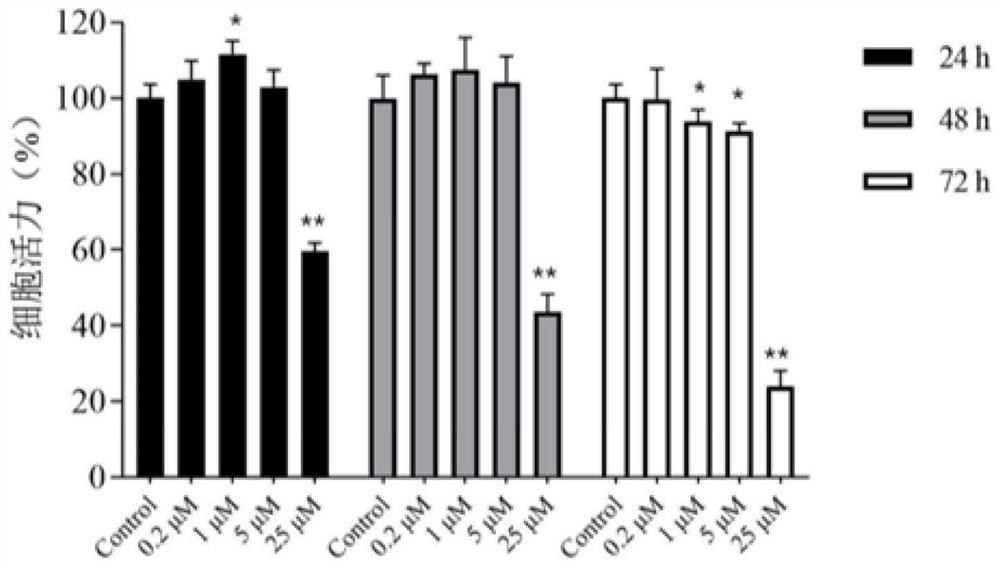Application of salinomycin in preparation of anti-coronavirus drugs
A coronavirus and salinomycin technology, applied in the field of biomedicine, can solve problems such as the shortage of anti-coronavirus drugs, achieve the effects of shortening the research and development cycle, safety and reliability, and saving development costs
- Summary
- Abstract
- Description
- Claims
- Application Information
AI Technical Summary
Problems solved by technology
Method used
Image
Examples
Embodiment 1
[0033] Example 1 Computer-aided drug design screening of small molecule inhibitors based on pAPN
[0034] 1 Experimental method:
[0035] 1.1 SYBYL-X 2.1.1 Screening compounds
[0036] According to the Basics Manual SYBYL-X manual, the pAPN crystal structure (4fke) downloaded from the PDB website and the small molecule compound library were prepared before docking, and then docking screening was performed in Screen and GeomX modes to screen out the top ranked small molecules compound.
[0037] 1.2 PyMOL 2.4 Simulation binding
[0038] The compound salinomycin with the highest score above was used for binding simulation to find the amino acid site where pAPN binds to salinomycin. The binding hydrogen bond is marked with a dotted line. The 5A area near the pocket is presented in the form of lines, and other parts are presented in the form of cartoons.
[0039] like figure 1 As shown, the results show that the combination score of salinomycin and pAPN is 8.78, indicating tha...
Embodiment 2
[0041] Example 2 The toxic effect of salinomycin on PK-15 cells
[0042] 1 Experimental method
[0043] 1.1 Culture of wild-type PK-15 cells
[0044] Digest the PK-15 cells in the logarithmic growth phase from a 10cm-diameter culture dish, and dilute to 10% with DMEM complete medium containing 10% fetal bovine serum according to the cell density. 6cells / mL cell suspension, mix the cells evenly and inoculate them into a 96-well plate with a row gun, add 100 μL of cell suspension to each well, add the same volume of PBS to the surrounding wells, and gently tap around the culture plate to make The cells are evenly distributed, and after the cells have settled to the bottom of the culture plate, put them in 37°C, 5% CO 2 cultured in a cell culture incubator.
[0045] When the cells grow to 70%-80%, remove the medium, wash the cells once with sterile PBS, then add serum-free DMEM medium, and remove the medium after 12 hours after the cell cycle is synchronized.
[0046] 1.2 Cel...
Embodiment 3
[0053] Example 3 Salinomycin for the inhibitory effect of TGEV in PK-15
[0054] 1 Virus inoculation and salinomycin treatment
[0055] Press PK-15 cells by 10 6 Add one per well into a 6-well cell culture plate, wait for the cells to grow to 70-80%, inoculate TGEV virus fluid, and observe the cytopathic effect (cytopathic effect, CPE) every day.
[0056] One hour after virus inoculation, salinomycin was added to each well to a final concentration of 5 μM and 15 μM, observed after 24 hours and 36 hours, and the cell supernatant and cells were collected respectively.
[0057] 2 The effect of salinomycin on inhibiting the copy number of TEGV
[0058] RNA was extracted from the cell supernatant, reverse-transcribed into cDNA (RR047A, Takara), and quantified by fluorescence (RR820A, Takara). The reaction conditions were as follows: initial template denaturation at 95°C for 1 min; denaturation at 95°C for 20s; annealing at 58°C , 30s; extension at 68°C, 30s; 35 cycles, all tests...
PUM
 Login to View More
Login to View More Abstract
Description
Claims
Application Information
 Login to View More
Login to View More - R&D
- Intellectual Property
- Life Sciences
- Materials
- Tech Scout
- Unparalleled Data Quality
- Higher Quality Content
- 60% Fewer Hallucinations
Browse by: Latest US Patents, China's latest patents, Technical Efficacy Thesaurus, Application Domain, Technology Topic, Popular Technical Reports.
© 2025 PatSnap. All rights reserved.Legal|Privacy policy|Modern Slavery Act Transparency Statement|Sitemap|About US| Contact US: help@patsnap.com



